ALMA images of rotating galaxies in the early universe shown on a background from the Hubble Space Telescope.
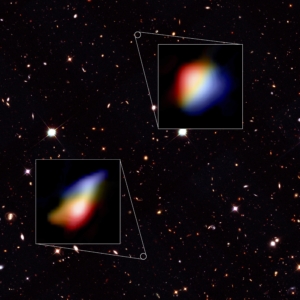

Correcting for Gravitational Lensing Effects
To correct for the effects of gravitational lensing in these galaxies, the ALMA data (left panel) is compared to a lensing-distorted model image (second panel from left). The difference is shown in the third panel from the left. The structure of the galaxy, after removing the lensing effect, is shown at right. This image loops through the different velocity ranges within the galaxy, which appear at different frequencies to ALMA due to the Doppler effect.
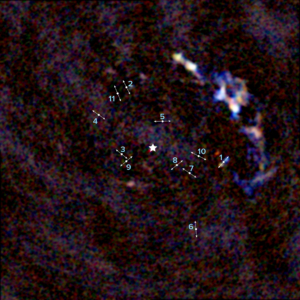
Earliest Phase of Star Formation Ever Observed in Highly Hostile Environment
An ALMA image of the center of the Milky Way galaxy showing the location of 11 young protostars within about 3 light-years of our galaxy’s supermassive black hole. The lines indicate the direction of the bipolar lobes created by high-velocity jets from the protostars. The illustrated star in the middle of the image indicates the location of Sagittarius A*, the 4 million solar mass supermassive black hole at the center of our galaxy. The next image is a zoom-in to one of the protostars.
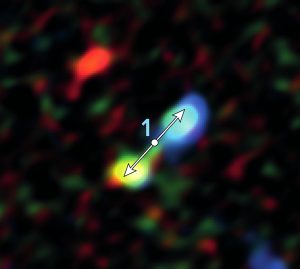
Jets in a Newly Formed Star
Double-lobe feature produced by jets from one of the newly forming stars. ALMA discovered 11 of these telltale signs of star formation remarkably close to the supermassive black hole at the center of our galaxy.
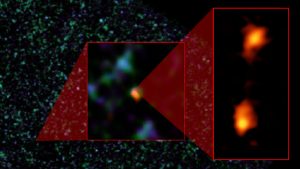
Pair of Exceptionally Rare Hyper-luminous Galaxies Discovered with ALMA
Composite image of ADFS-27 galaxy pair. The background image is from ESA’s Herschel Space Observatory. The object was then detected by ESO’s Atacama Pathfinder EXperiment (APEX) telescope (middle image). ALMA (right) was able to identify two galaxies: ADFS-27N (for North) and ADFS-27S (for South). The starbursting galaxies are about 12.8 billion light-years from Earth and destined to merge into a single, massive galaxy.
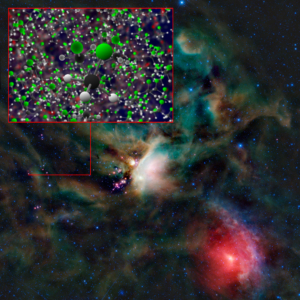
ALMA Finds Organohalogen Methyl Chloride Around Infant Stars
Organohalogen methyl chloride discovered by ALMA around the infant stars in IRAS 16293-2422. These same organic compounds were discovered in the thin atmosphere surrounding 67P/C-G by the Rosetta space probe. The background image of the Rho Ophiuchi cloud complex is from NASA’s Wide-field Infrared Survey Explorer (WISE).





